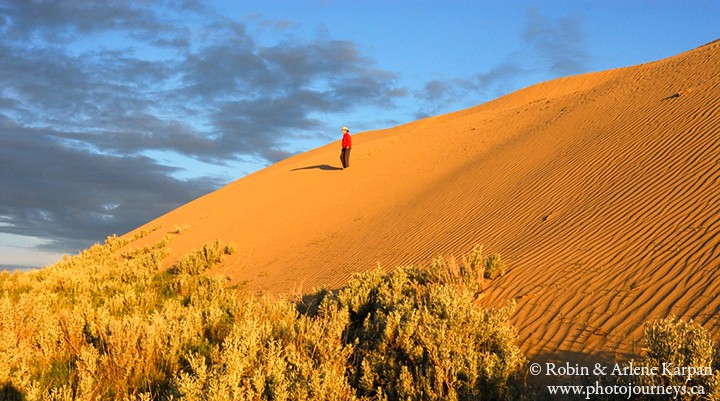

The Great Sand Hills of southwest Saskatchewan are the second largest expanse of sand dunes in Canada. Only the Athabasca Sand Dunes in northern Saskatchewan are larger. One huge advantage of visiting the Great Sand Hills is their easy accessibility – you can simply drive right up to them.
The hills cover a vast area of native prairie including not only dunes, but also stabilized sand, grasslands, saline lakes, wooded coulees, cottonwood groves, and plenty of sage. The relatively untouched nature of the area makes it a great place for wildlife such as pronghorn, mule deer, the fast-disappearing burrowing owl, and the rare and unusual Ord’s kangaroo rat – a tiny rodent that has adapted to the arid conditions by making use of the water in seeds it consumes.
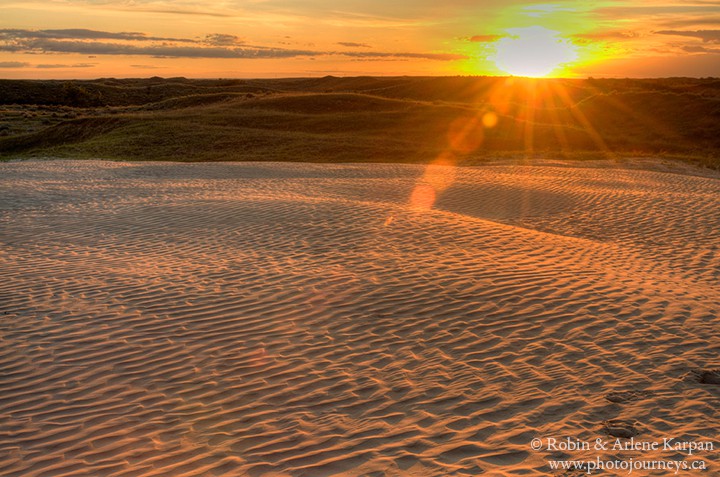
While active sand dunes cover a relatively small portion of the Great Sand Hills, this is undoubtedly the most striking feature and the highlight for photography. The easiest way to approach the dunes is from the north. The largest town in the area is Leader, at the junctions of Highways #21 and #32. From Leader, head east along #32 for about 20 kilometres to the village of Sceptre, where it’s worthwhile making a stop at the Great Sandhills Museum along the highway.
From the east end of Sceptre, follow the signs south for a little over 20 kilometres to the designated parking area where the walls of sand come right to the road. From here you walk, although you don’t have to go far. One big dune is immediately beside the parking area.
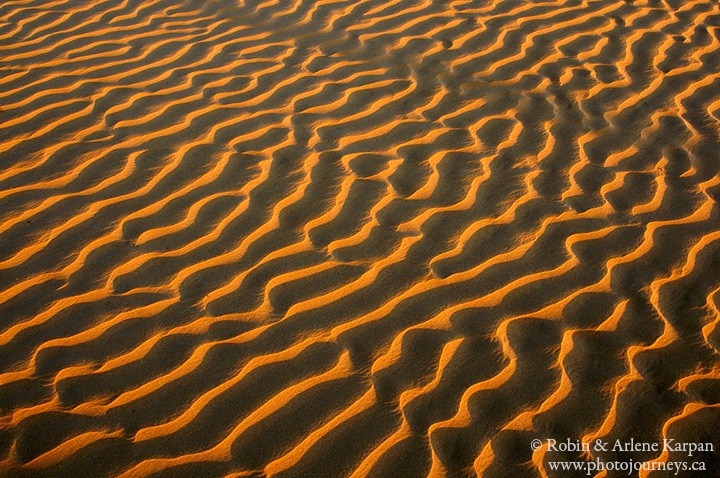
Landscape photography is best either early or late in the day when the sun is low, and this is especially the case for sand dunes. The sand is a rather flat white during most of the day, but just after sunrise or just before sunset, it turns a warm reddish-gold. These are also the best times to capture the wild, wind-sculpted surface of the sand when shadows and highlights accentuate the contours.
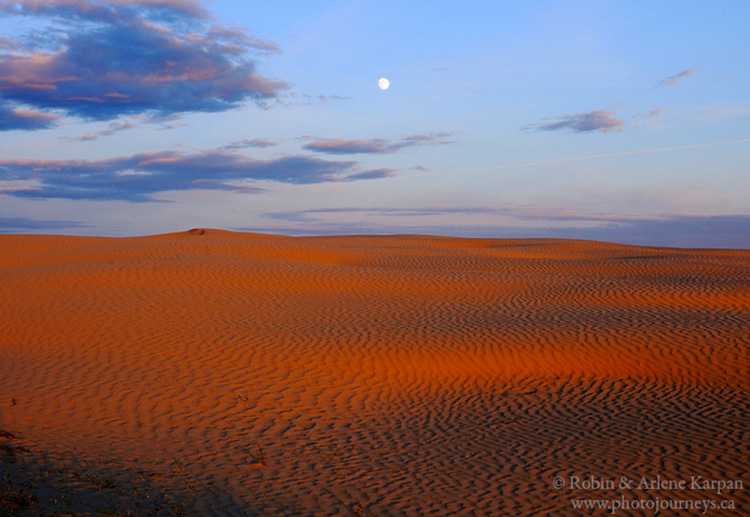
Another advantage to coming early or late in the day is that there is usually (though not always) less chance of wind. The sand is very fine, so it doesn’t take much of a breeze for sand to blow. It’s a good idea to keep your camera in a bag when walking around and only take it out when you’re ready to shoot. You might be able to get some dramatic shots of wind blowing across the crests of dunes, but try to do this while standing upwind or your camera won’t be happy about it.
The Great Sand Hills are impressive enough that we included them as one of the places in our Great Saskatchewan Bucket List book – 50 unforgettable natural wonders to see before you kick the bucket.
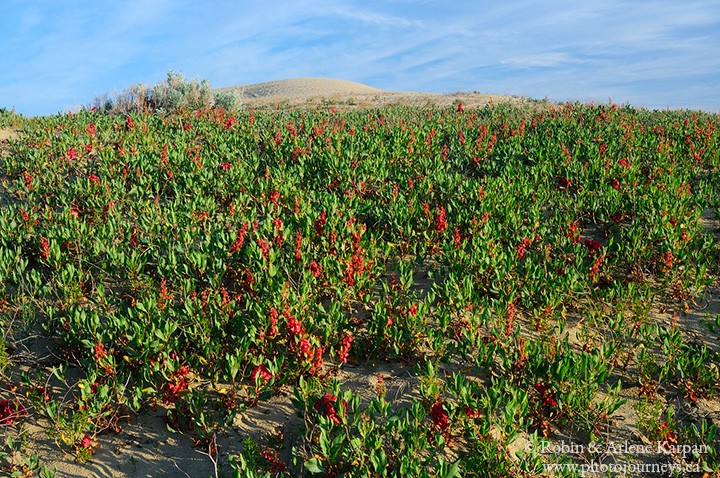
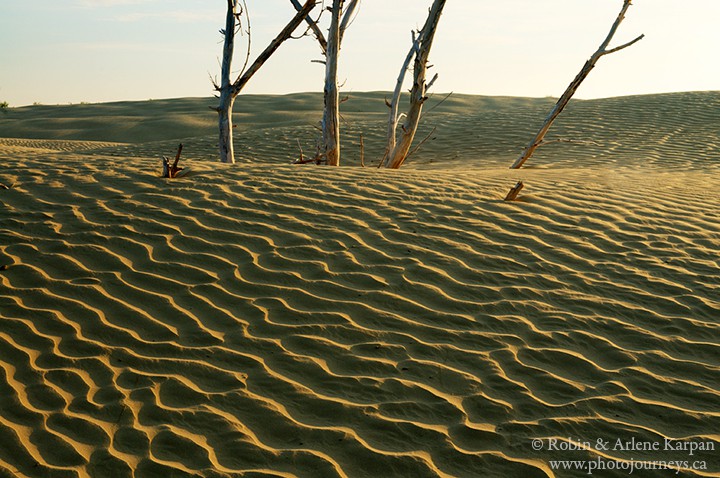
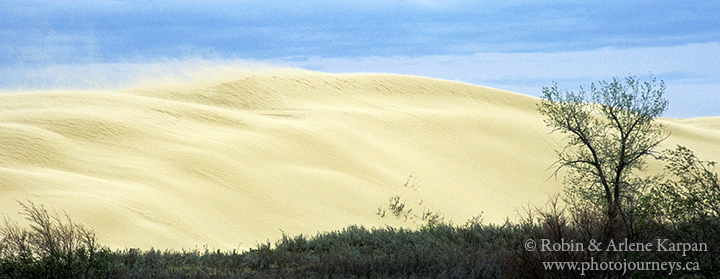
See more photos in an updated post on Revisiting the Great Sand Hills.


An impressive set of shots! As usual I might add.
Thanks Leigh! Nice to hear from another sand dune enthusiast.